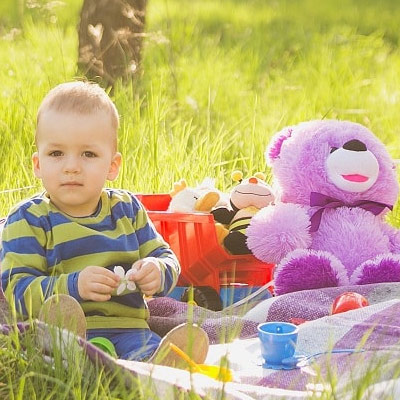 Everyone has feelings – they are simply an emotional response to what is happening to a person at any given moment. It’s how a person expresses her feelings that may trouble people, and especially emotions that may be expressed inappropriately. Young children, not understanding the difference between the feelings themselves and the way they should be expressed, have a tendency to be labeled as a behavior issue. Therefore, to express feelings appropriately means to let others know about your feelings without hurting oneself or others. Hopefully this definition hasn’t taken you over the edge!
Everyone has feelings – they are simply an emotional response to what is happening to a person at any given moment. It’s how a person expresses her feelings that may trouble people, and especially emotions that may be expressed inappropriately. Young children, not understanding the difference between the feelings themselves and the way they should be expressed, have a tendency to be labeled as a behavior issue. Therefore, to express feelings appropriately means to let others know about your feelings without hurting oneself or others. Hopefully this definition hasn’t taken you over the edge!
For example, parents and caregivers can help infants and toddlers identify their feelings by acknowledging them. Physical feelings of comfort or discomfort can refer to feedings, diaper changes, and sleep. As we recognize what it feels like to be in wet clothing, we may say, “Wow, your diaper is wet and I bet you’re uncomfortable.†Then after a diaper change the conversation may say, “Now, I think you will feel better with a dry bottom.†Young children learn to recognize their own emotions when parents label their feelings for them in this manner.
It’s usually easier to acknowledge physical feelings and needs. Yet, strong emotions of sadness, disappointment, and anger are just as natural as hunger, thirst, and cold. The challenge is to teach young children (babies and toddlers) how to express it appropriately. It’s better for your child to fuss and kick on the floor to express anger than to provoke physical violence on another person. We all know that older babies and toddlers can hit and even bite when upset.
Then, there is also frustration. You know how you feel when you can’t perform a task. Well, think about how a little learner feels when things just don’t go the right way. For example, a young toddler tries to shovel sand into a jar repeatedly and it just doesn’t work. Immediately the child flares into a tantrum. Parents need to address the situation like, “Allison, I know it’s frustrating when it doesn’t work the way you want. I’ll help you if that is okay.†Usually this goes well, and the child stops crying and tries again with parental help. As the task is completed, the child beams and says, “I did it.â€
Parents can pretty much observe a child’s movement and facial expressions and recognize their feelings. Don’t just settle for the words mad, sad, or glad. Use new vocabulary to describe your child’s feelings. Children absorb words everyday, so use descriptions such as disappointed, frustrated, excited, and satisfied. It’s also a good idea to put these words into phrases when conversing with your youngster. Here are a few to acknowledge emotions:
- I can see by the smile on your face that you love your new book.
- I can tell you are angry that your friend took your toy away.
- I know you hoped that Aunt Judy would come to visit today. I’m sorry you are disappointed.
- Isn’t it delightful to be outdoors in the sunshine after all that rain?










